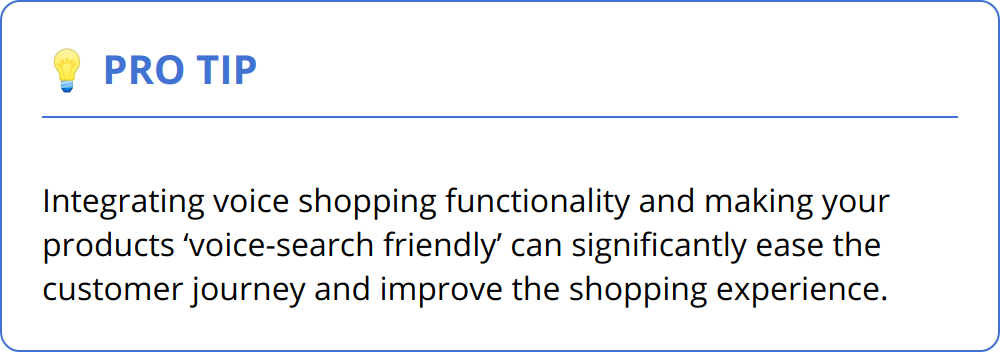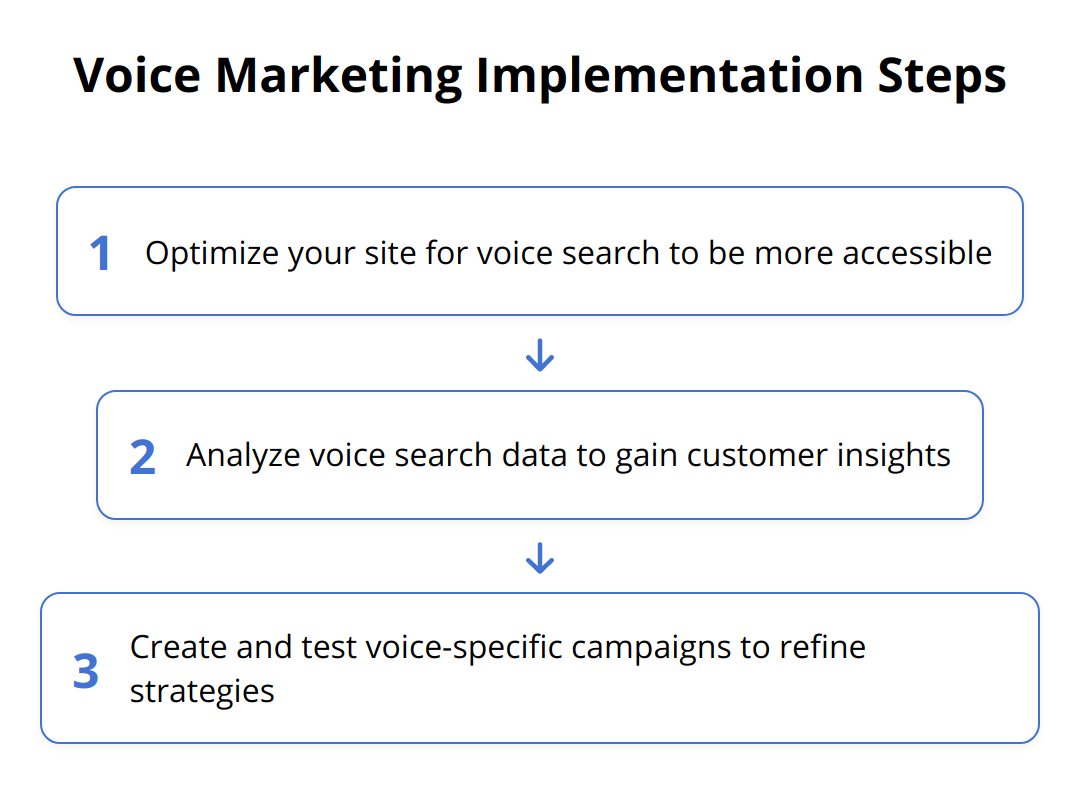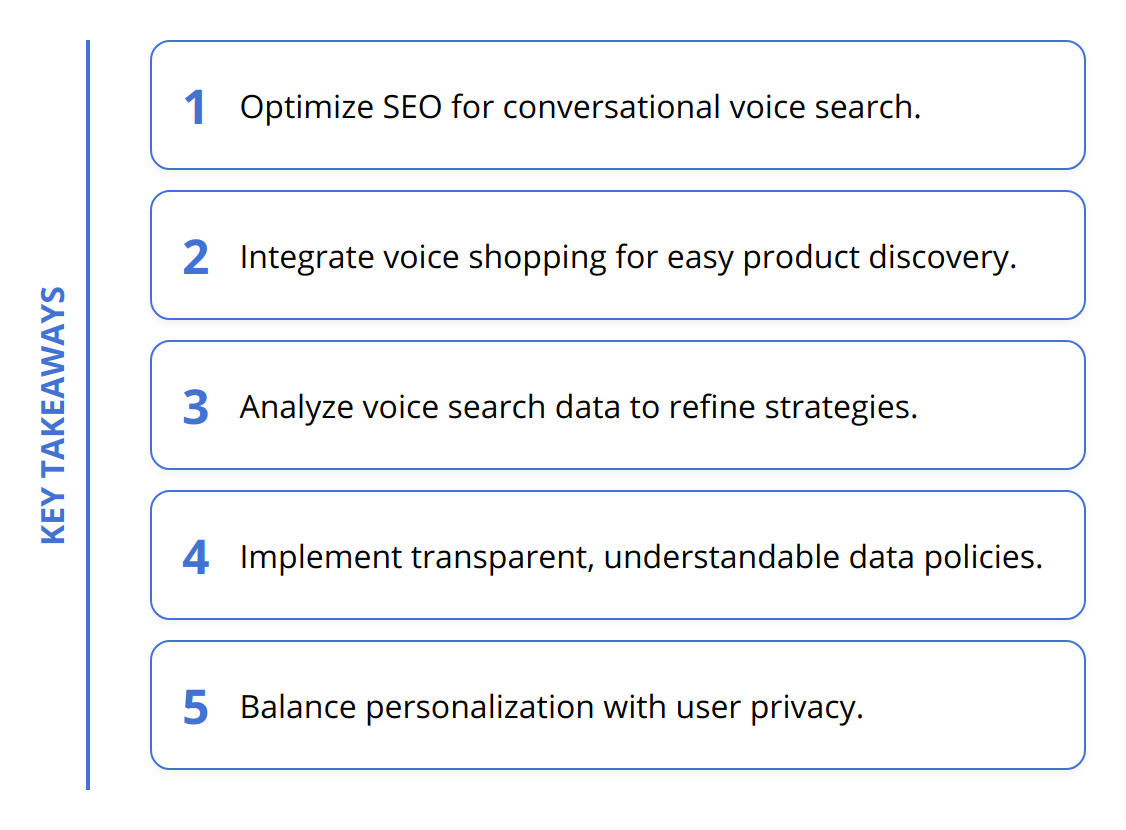Voice assistant technology is reshaping the way brands connect with consumers. We at Emplibot recognize the importance of understanding this shift as it revolutionizes marketing strategies and consumer interactions.
This transformation brings new opportunities for businesses to create personalized and efficient customer experiences. Meanwhile, for consumers, it alters the landscape of convenience and privacy expectations, demanding a delicate balance between innovation and user comfort.
Engaging Through Voice: What’s New?
Voice search is rapidly becoming a cornerstone for online visibility. With over 50% of all searches predicted to be voice-based by 2022, according to Comscore, it’s imperative for brands to optimize their SEO for this paradigm. Traditional keyword strategies won’t cut it anymore; semantic search techniques which prioritize conversational phrases and questions are now essential.

Businesses are tapping into voice assistants to enhance customer relationships. Using natural language processing (NLP), companies can offer more human-like interactions, providing timely and contextually relevant responses. For instance, a Domino’s customer can now order a pizza simply by speaking to Alexa, creating a seamless and hands-free experience that mirrors speaking to a store clerk.
Venturing into voice commerce presents a lucrative opportunity for online retailers, with OC&C Strategy Consultants estimating it will balloon to a $40 billion market by 2022. Shoppers are enjoying the convenience of re-ordering essentials like groceries with a simple voice command to their Echo devices. This trend is pushing brands to rethink the customer journey, ensuring that their products can be easily discovered and purchased via voice commands.
Here are some actionable tips to adapt to the voice marketing landscape:

-
Perform a thorough voice search audit to pinpoint how your brand can improve in this area.
-
Adapt your content strategy to include conversational keywords and FAQs.
-
Integrate voice shopping functionalities and make your products ‘voice-search friendly’.
Partnership with voice platforms is essential for brands looking to reach their audience effectively. It’s becoming less about if your brand will engage in voice marketing and more about how it will do so. For insights on building this kind of partnership, the AI-powered keyword research guide from our resources can be a helpful starting point. Meanwhile, for those looking to understand the impact of voice on shopping habits, our piece on voice search SEO strategies offers practical advice and statistics.
Implementing changes for voice search isn’t just about future-proofing; it’s a direct line to today’s consumers who seek speed, convenience, and personalization. As the technology matures and adoption grows, businesses that fine-tune their voice strategies will likely see an upswing in customer engagement and sales growth.
Harnessing Voice for Business Advantage
The introduction of voice assistant technology has created a seismic shift in digital marketing. Operating in a hands-free era, businesses are now more visible than ever. Voice commands have opened a direct route for consumers to interact with businesses without the barrier of screens or keyboards, making it easier for brands to be found and engaged with during day-to-day activities.
Take customer experiences; they’re no longer just about delivering what consumers want but how they want it. Personalization has been the game-changer, offering individualized interactions, smooth solutions to problems, and making customers feel understood on a large scale. When a user asks for the nearest coffee place, imagine the delight of not only providing a location but also predicting their favorite order based on past behavior. It’s a level of service that was once out of reach for many businesses, now neatly packaged in the form of voice marketing.

The data trove that comes with voice interactions is nothing to overlook. By analyzing voice search queries and interactions, businesses gain profound insights into customer preferences and behavior, leading to enhanced decision-making. Each voice command contains a rich context that, when deciphered accurately, can inform not just marketing tactics but product development and customer service improvements as well.
To leverage voice assistant marketing, consider these practical steps:
-
Optimize your site for voice search with an emphasis on featured snippets that voice assistants are likely to pull data from.
-
Analyze voice search data to understand the questions customers are asking and refine your SEO and content strategies accordingly.
-
Test and learn by creating voice-specific campaigns and measure their impact against your traditional channels.

As technology surges forward, embracing the shift towards voice will not be optional but imperative for those who want to maintain a competitive edge. And as more users depend on voice commands for their daily tasks, businesses that have primed themselves for this transformation are bound to see an increase in engagement and loyalty.
For more insights on optimizing for semantic search, our guide on marketing automation data offers in-depth strategies. To delve deeper into creating personalized customer experiences, explore our resources on personalized marketing with AI.
In adopting a voice marketing strategy, you’re not just following a trend; you’re making a strategic decision to meet your customers where they are — a place of convenience, immediacy, and personalization. Businesses that understand and implement this will stand out in the evolving digital landscape.
Voice Assistants and Consumer Dynamics
The intersection of convenience and privacy concerns is a hotbed of discussion as voice assistant marketing takes center stage in consumer lives. The surge in voice technology use brings with it a wave of adaptation that businesses and users alike must navigate. This change is more than just a tech trend; it represents a fundamental shift in how interactions are initiated and received.
Convenience versus Privacy is a battleground where consumer comfort is at stake. Voice technology, in its pursuit of ease, often requires access to personal data. As users enjoy the simplicity of asking their device for the weather, they’re also handing over their voiceprints – a unique identifier. The question is, how much are users willing to trade in terms of privacy to gain this unparalleled convenience? It’s a give and take – users must be aware that convenience comes with a degree of transparency into their habits and preferences.

Recognizing the shift in consumer behavior, businesses should pay attention to these evolving needs and expectations. A spontaneous voice command to purchase an item echoes the rise in expectant consumers who want immediate solutions. Marking this shift, businesses should:
-
Implement transparent data policies that users can easily understand and respect.
-
Educate users on privacy controls available within voice assistants.
In terms of personalization and comfort, striking the right balance is key. Users adore services tailored to their history and preferences but not at the cost of feeling monitored or profiled. To maintain this balance:
-
Employ AI strategies that deliver personalized content while safeguarding user data.
-
Refrain from overtly intrusive personalization that could push users away.
Trends and recommendations to keep in mind:
-
Stay informed on privacy regulations and be prepared to adjust strategies accordingly.
-
Continuous improvement in recognizing diverse voices and accents will expand market reach and consumer satisfaction.
-
From a business perspective, recognizing the value of voice search optimization is non-negotiable if you wish to remain relevant.
The onward march of voice assistant marketing requires businesses to be nimble and considerate. Those willing to evolve with their customers and prioritize privacy will secure loyalty and a sustainable presence in this continually shifting landscape. For those ready to optimize their content for these new patterns of behavior, our voice search SEO guide provides practical steps to take now.
Following these insights, businesses that navigate this new territory with a clear understanding of how to balance innovation with respect for user preferences will come out on top. The key takeaway? Privacy and personalization are not mutually exclusive, and businesses that learn to harmonize the two in the realm of voice marketing will lead the pack.
Wrapping Up
As we look ahead, voice assistant technology will continue to evolve at a rapid pace, opening new horizons for creative marketing strategies and deepening the interactions between businesses and consumers. The future will likely hold more sophisticated AI that understands not just speech, but intent and emotion, refining the human-AI interaction to unprecedented levels.

Businesses are now tasked with the challenge of harnessing these advancements to meet consumer demands without compromising on the individual’s need for privacy and control. It’s all about striking the right equilibrium between leveraging innovative technologies and respecting consumer boundaries. This balancing act will remain at the heart of successful marketing as the AI landscape changes.
The integration of AI in marketing strategy is moving towards a more conversational and immersive approach. AI systems are becoming more adept at providing contextually relevant and personalized content while also respecting the privacy of users. Marketers must remain agile, continuously adapting to these changes to align business goals with the expectations of an increasingly tech-savvy consumer base.
At Emplibot, we offer tools like our automated blog service to seamlessly align with these innovations. Our system not only conducts keyword research and includes images and internal linking, but also publishes SEO-friendly articles to your WordPress site without lifting a finger. This automation ensures that your content stays fresh and relevant, allowing you to keep up with trends like voice search optimization without additional effort.
As AI becomes more entwined with marketing strategies, embracing this technology will be essential for businesses to stay ahead in the digital realm. The companies that recognize and act upon the potential of AI will not only see growth but also build stronger, more meaningful connections with their customers.
In conclusion, voice assistant technology is not just reshaping customer engagement; it’s sparking a complete recalibration of marketing frameworks. Innovators and forward-thinkers will carve out their place in this new landscape by understanding the subtle and dynamic interplay of AI’s capabilities and consumer needs. As always, the goal remains: to create engaging, relevant, and valuable experiences for users across all touchpoints.

